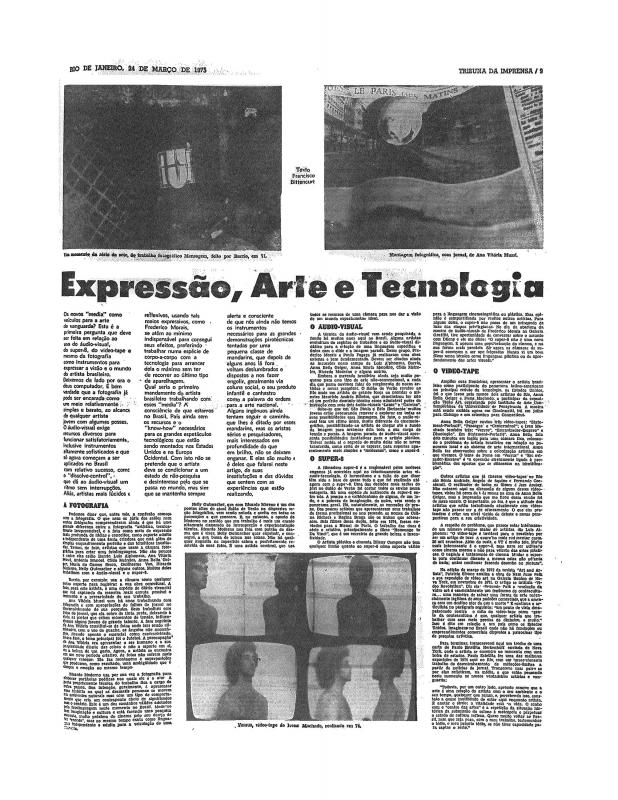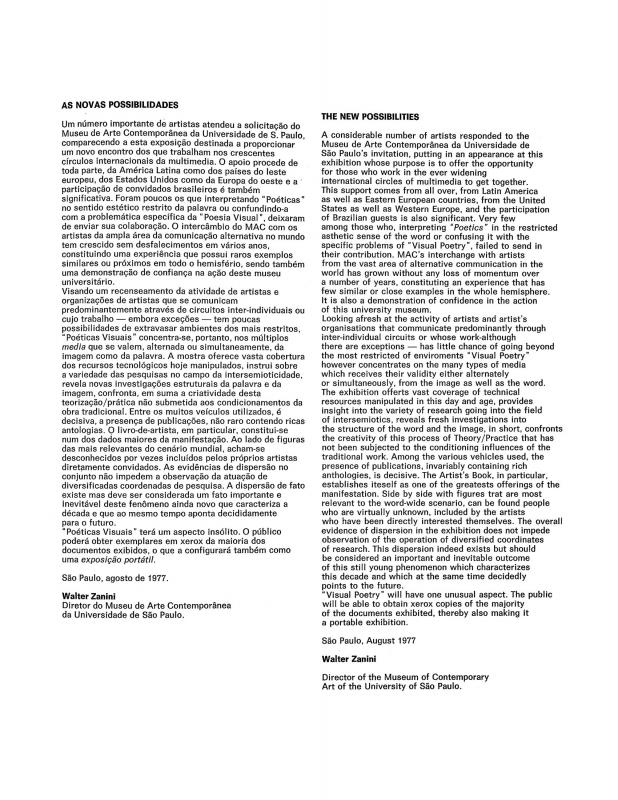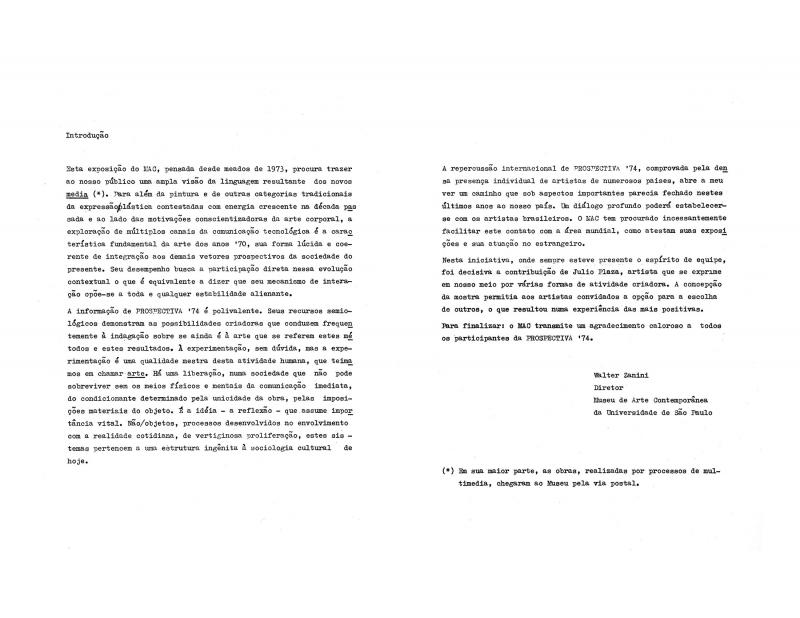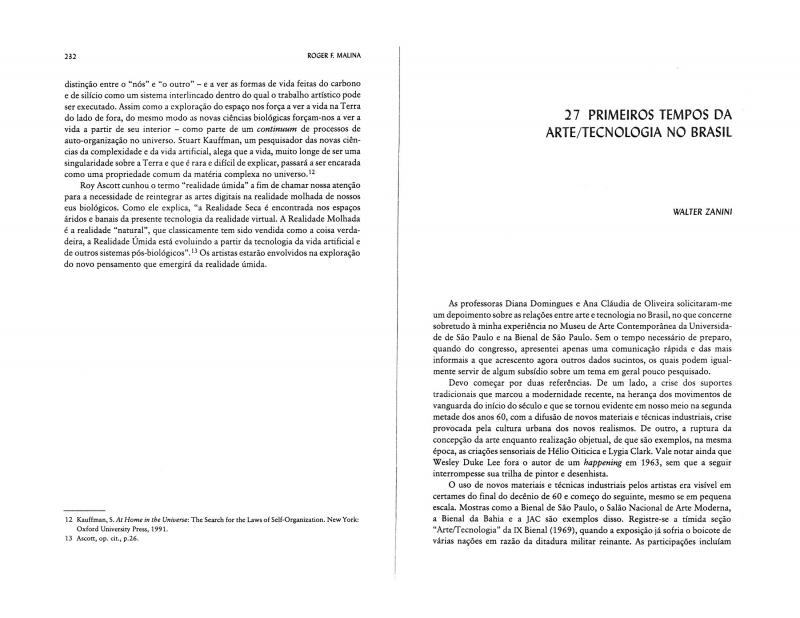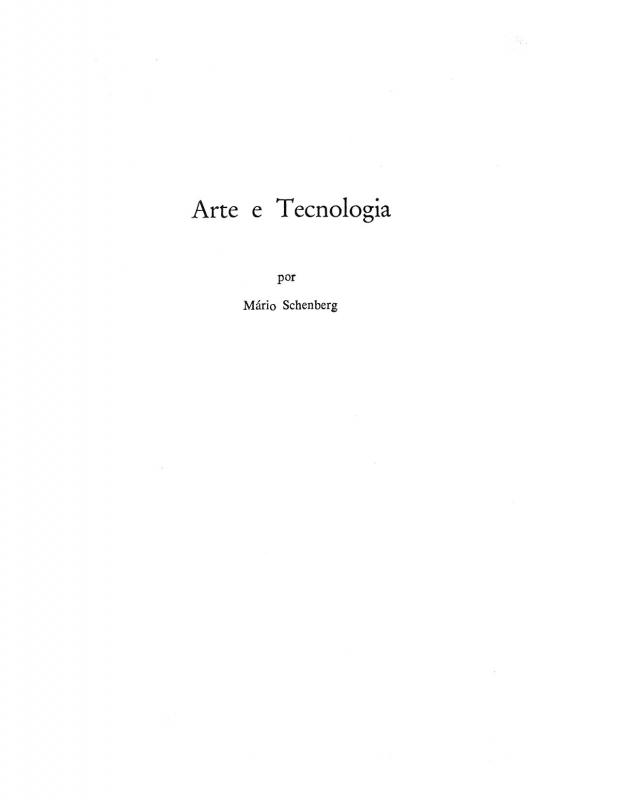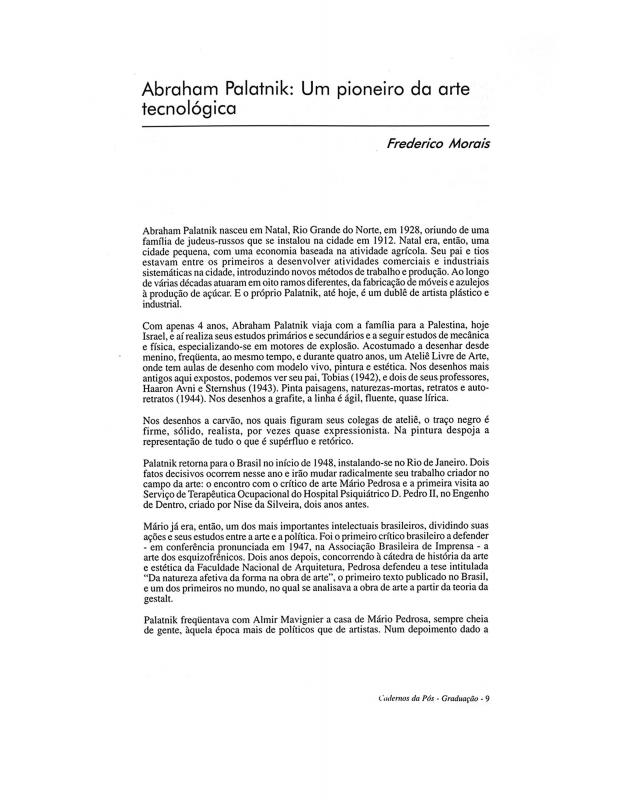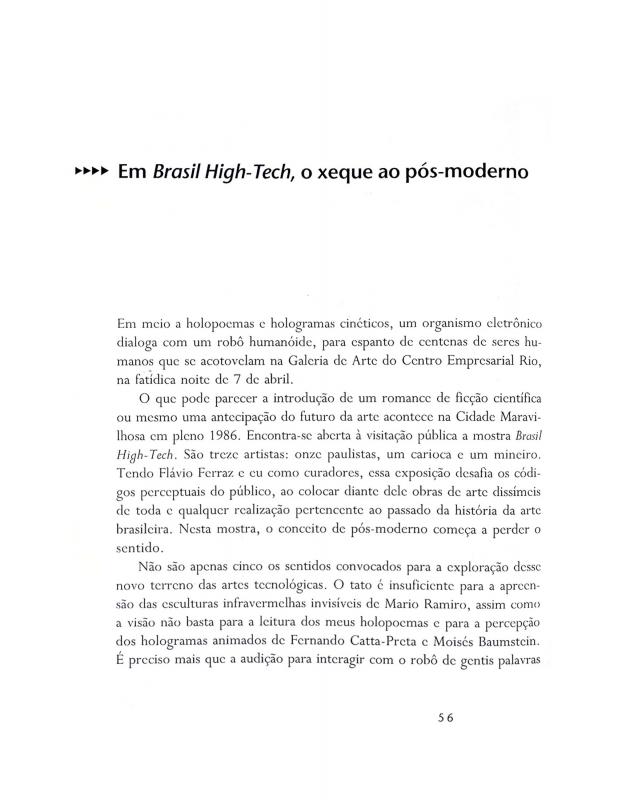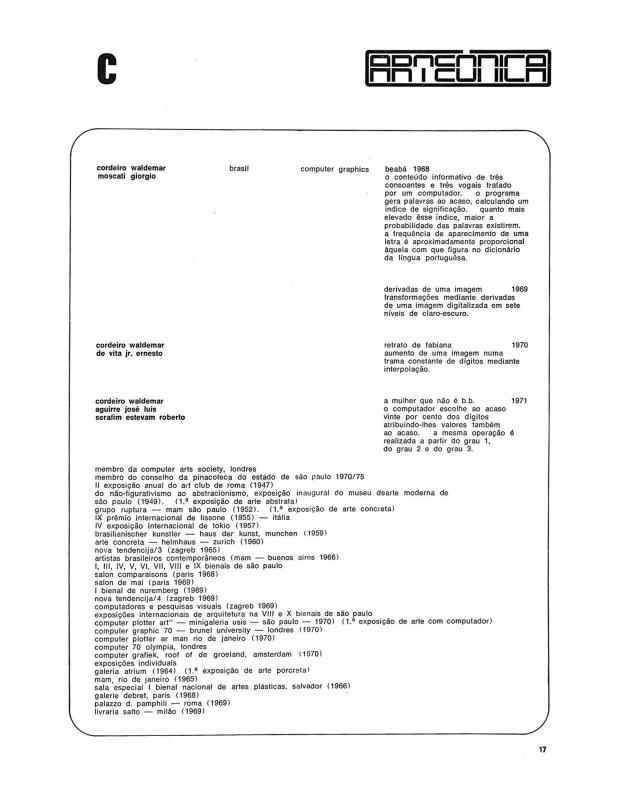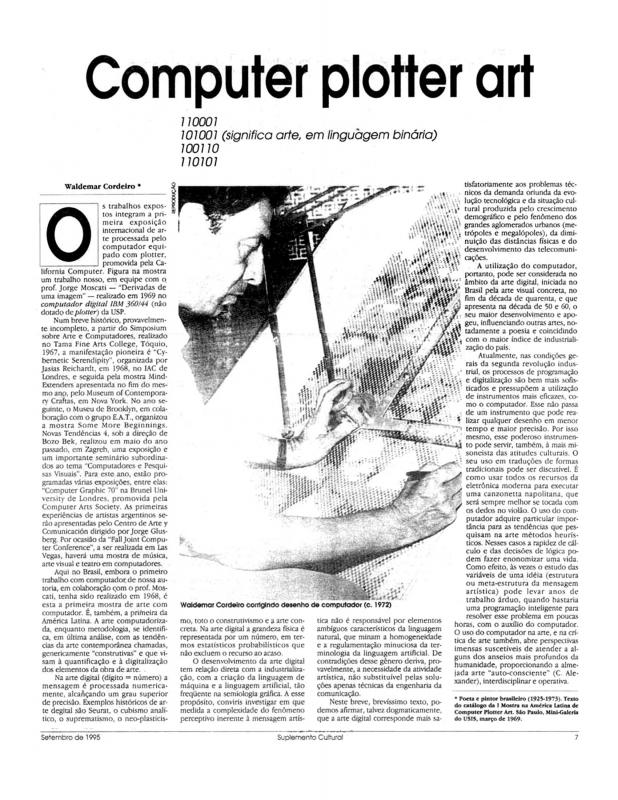Milton Sogabe (b. 1953) is an artist, researcher, and professor at the Instituto de Artes de la Universidade do Estado de São Paulo (UNESP). In the field of “art and technology,” he has been identified with activities developed as innovations since the 1980s. Along with several other artists, he belonged to Instituto de Pesquisa em Arte e Tecnologia (IPAT). Among these artists, some of the most distinguished were Julio Plaza, Paulo Laurentiz, and Artur Matuk, whose contributions to art of this kind in Brazil include works with video-text, slow-scan TV, and even fax. In 1995, Sogabe founded SCIArts along with other artists and scientists with an interdisciplinary bent who are dedicated to exploring the relationships formed by art that delves into science via technology.
To find support in Brazil for Sogabe’s interpretation, see “Espressão, arte e tecnologia” [doc. no. 1110492]. This text by Francisco Bittencourt reflects the period of intense artistic experimentation that went on in Brazil in the 1970s, via technological media that generated audiovisual images. That was also the decade when Walter Zanini was director of the Museu de Arte Contemporânea da Universidade de São Paulo (MAC-USP). As director, he organized exhibitions on this theme with Julio Plaza: one called, Poéticas Visuais, “As novas possibilidades = The new possibilities” [doc. no. 1110585], and another under the title of Perspectiva ’74, “Introdução” [doc. no. 1110588]. In addition, Zanini wrote a paradigmatic text on the issue, “Primeiros tempos da arte/tecnologia no Brasil” [doc. no. 1111029]. The well-known physicist and politician Mário Schenberg had written an earlier essay on this theme in Brazil, “Arte e tecnologia” [doc. no. 1111105]. Another important Brazilian art critic who had a lively interest in the conjunction between art and technology was Frederico Morais, who wrote an article on “Abraham Palatnik: um pioneiro da arte tecnológica” [doc. no. 1110793], in which he gave a specific account of the ground-breaking nature of his kinechromatic work. In 1986, the critic who showed the importance of Abraham Palatnik as a predecessor was Eduardo Kac in “Em Brasil High Tech, o xeque ao pós-moderno” [doc. no. 1111320]. And of course, an artist not to be overlooked is the great pioneer of electronic and Concrete art, painter Waldemar Cordeiro. Starting in the late 1960s, Cordeiro came up with a term for art that was electronic by nature in “Arteônica” [doc. no. 1110836], and “Computer plotter art - primeira mostra na América Latina” [doc. no. 1110487].

